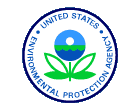
| Pesticides: Topical & Chemical Fact Sheets | ||

|
|
|||||||||
|
Malathion for Mosquito ControlUpdated: April 17, 2002 Mosquito Life Cycle / Malathion / Resources The Environmental Protection Agency (EPA) evaluates and registers (licenses) pesticides to ensure that they can be used safely. These pesticides include products used in the mosquito control programs that states and communities have established. To evaluate any pesticide, EPA assesses a wide variety of tests to determine whether a pesticide has the potential to cause adverse effects on humans, wildlife, fish and plants, including endangered species and non-target organisms. Officials responsible for mosquito control programs make decisions to use pesticides based on an evaluation of the risks to the general public from diseases transmitted by mosquitoes or on an evaluation of the nuisance level that communities can tolerate from a mosquito infestation. Based on surveillance and monitoring, mosquito control officials select specific pesticides and other control measures that best suit local conditions in order to achieve effective control of mosquitoes with the least impact on human health and the environment. It is especially important to conduct effective mosquito prevention programs by eliminating breeding habitats or applying pesticides to control the early life stages of the mosquito. Prevention programs, such as elimination of any standing water that could serve as a breeding site, help reduce the adult mosquito population and the need to apply other pesticides for adult mosquito control. Since no pesticide can be considered 100 percent safe, pesticide applicators and the general public should always exercise care and follow specified safety precautions during use to reduce risks. This fact sheet provides basic information on larvicides, a type of pesticide used in mosquito control programs.
The mosquito goes through four distinct stages during its life cycle:
Malathion is an organophosphate (OP) insecticide that has been registered for use in the United States since 1956. It is used in agriculture, residential gardens, public recreation areas, and in public health pest control programs. When applied in accordance with the rate of application and safety precautions specified on the label, malathion can be used to kill mosquitoes without posing unreasonable risks to human health or the environment. How is Malathion Used in Mosquito Control?The mosquito goes through four distinct stages during its life cycle: egg, larva, pupa, and adult. Malathion is an adulticide, used to kill adult mosquitoes. In mosquito control programs conducted by state or local authorities, malathion is applied by truck-mounted or aircraft-mounted sprayers. Malathion is applied as an ultra-low volume (ULV) spray. ULV sprayers dispense very fine aerosol droplets that stay aloft and kill mosquitoes on contact. ULV applications involve small quantities of pesticide active ingredient in relation to the size of the area treated. For mosquito control, malathion is applied at a maximum rate of 0.23 pounds (or about 2.5 fluid ounces) of active ingredient per acre, which minimizes exposure and risks to people and the environment. Does Malathion Pose Risks to Human Health?Malathion can be used for public health mosquito control programs without posing unreasonable risks to the general population when applied according to the label. EPA has estimated the exposure and risks to both adults and children posed by ULV aerial and ground applications of malathion. Because of the very small amount of active ingredient released per acre of ground, the estimates found that for all scenarios considered, exposures were hundreds or even thousands of times below an amount that might pose a health concern. These estimates assumed several spraying events over a period of weeks, and also assumed that a toddler would ingest some soil and grass in addition to skin and inhalation exposure. However, at high doses, malathion, like other organophosphates, can overstimulate the nervous system causing nausea, dizziness, or confusion. Severe high-dose poisoning with any organophosphate can cause convulsions, respiratory paralysis, and death. Does Malathion Pose Risks to Wildlife or the Environment?Malathion used in mosquito control programs does not pose unreasonable risks to wildlife or the environment. Malathion degrades rapidly in the environment, especially in moist soil, and it displays low toxicity to birds and mammals. Malathion is highly toxic to insects, including beneficial insects such as honeybees. For that reason, EPA has established specific precautions on the label to reduce such risks. What is the Current Regulatory Status of Malathion?As part of its responsibility to reassess all older pesticides registered before 1984, EPA is currently reviewing malathion as part of its reregistration process. The review of malathion is scheduled for completion in 2002. A risk assessment covering all uses of malathion is currently available to the public for review at http://www.epa.gov/oppsrrd1/op/malathion.htm.Visit the EPA Web site (see address below) for the most current information on malathion.
For more information about mosquito control in your area, contact your state or local health department. Other resources for information on public health, disease control, and mosquito control include the following: Centers for Disease Control and Prevention (CDC) National Pesticide Information Center (NPIC) West Nile Virus Resource Guide: http://npic.orst.edu/wnv/ American Mosquito Control Association (AMCA) For more information regarding the Federal pesticide regulatory programs, contact EPA headquarters or one of the 10 regional offices below.
Other Helpful EPA Publications
|
|
|
||
|
|